Bass Fishing in Winter: Strategies for Cold Weather Angling
Share this bass fishing article with every angler you know!
Most of us grow up heading out to the pond on warm, sunny, weekend days to learn the ropes and reel in our first fish. There’s nothing wrong with that. It’s certainly the most comfortable way to fish, and it tends to be a more relaxing experience. Unfortunately, a lot of us get stuck in that habit, and we completely neglect half the year.
Cold-weather fishing, such as in the earliest weeks of spring, later weeks of fall, and of course, winter, doesn’t tend to attract a lot of fishermen.
Today, we’re going to walk you through why that’s a mistake, and then we’re going to give you some tips to keep you reeling in fish all year long.
Read on to gain a better understanding of bass fishing in winter.
Get notified of new bass fishing articles, tips and tricks!
Newsletter Signup
Is It Fruitful to Fish in Cold Weather?
There’s a misconception when it comes to cold-weather fishing. The average weekend warrior tends to think that the bass simply won’t bite once the temperature gets below a certain level. That’s simply not true.
Bass, or fish in general, don’t just go dormant once it gets chilly outside. They do slow down, and they change their priorities a bit to survive the harshest cold weather, but they still need to eat. That means they’ll bite.
The difference is that the tactics you use for warm-weather fishing won’t be nearly as effective.
This is both a challenge and a positive opportunity.
Once you get bitten by the fishing bug, challenges are welcome. The harder it is, the more bragging rights you get. That’s why the Bassmaster Classic is held in the dead of winter. However, since different tactics are needed to be successful, you also get the chance to learn about an entirely new part of the fishing world. Branching out like that is not only fun and a great way to build skills, but it’s a crucial part of being an angler and appreciating the sport for everything it has to offer.
Not to mention, the coldest seasons are a long way away from the bass spawning season. So, the fish that do bite tend to be bigger.
Overall, getting out when the weekend warriors are nestled up in their homes and avoiding the cold is an experience every die-hard angler should have.
Strategies to Catch Bass in Cold Weather
Now that we’ve hopefully convinced you to put a jacket on and brave the cold, it’s time to dig into the strategies that will help you succeed.
You can’t expect to get out there and use the same baits and methods you use in the summer. So, if you want to do more than sit in the cold staring at the water, keep these pointers in your mental toolbox as the temperature plummets.
1: Take it Slow
First and foremost, the whole experience is a lot slower, and it keeps getting slower the colder it is.
Think about when you’re cold. Your dexterity lowers, you don’t really want to move around much, and you just can’t perform at your best. Everything is harder. The same is true for the bass.
As such, the bass isn't going to chase after your crankbait, attack every little flash they see, or otherwise expend tons of energy getting the “food” you’re presenting.
You have to slow it down several notches.
If you’re used to speeding a spinnerbait back to your boat in the summer, you’ll feel like you’re moving at a snail’s pace fishing it properly in the winter.
You have to give the fish time to check out the lure, get itself in position, and snap down on it if you want to catch anything. Reaction bites are still possible, and preferable, but you still need to move the lure slowly since the target’s reflexes aren’t at their peak.
This is probably where most anglers mess up the most during cold-weather fishing attempts. So, if you’re not catching anything, look at how fast you’re presenting your bass lure first.
2: Avoid Windy Spots
In the middle of the summer, the wind can be useful. It lowers the water’s temp a bit, and it stirs up bait fish. In the winter, it’s a horrible obstacle to face.
The fish are already cold. So, any part of the water that is going to be even colder is going to be a bad area to target.
If the wind is blowing in a part of the lake and making the water choppy, go to the opposite side. The water will still be cold, but it will be just a little bit warmer and attract the fish that are trying to increase their temperatures at all costs.
3: Be Mindful of Water Clarity
In the winter, most bodies of water get considerably clearer. This is because the vegetation that gives darker bodies of water much of its color tends to die off, and there is less natural matter being released into the water. A pond that is relatively muddy in the summer can be crystal clear in the winter.
As such, you have to be mindful of how that affects fish behavior.
The bass can be a bit more cautious, and they can be skittish if they see you hovering over them. In a way, you want to approach this the same way you would a crystal-clear lake in the summertime. Try to minimize your body’s visual effect on the water, and make sure your terminal tackle, such as your line, isn’t making it obvious that the lure you’re using isn’t a fish.
Featured Resource: 10 Tips for Catching Big Bass in Clear Water
4: Lure Color
In the summer, the lure color you use is going to vary dramatically from spot to spot. In the winter, there are two primary color palettes you want to use in the majority of situations. This has to do with our previous tip since lure color is usually determined by the color of the bait fish nearby and water conditions.
Start by trying out pale silvers, lighter natural greens, and other colors that match the natural color of the bait fish in the winter. They all tend to lighten considerably. This is called “matching the hatch”, and it helps your lure look more like the fish you’re emulating.
If the water you’re fishing in is still somewhat murky, it can be useful to tie on a brighter lure. We’ve had a lot of success with lures that blend stark white parts with metallic blue or red, and both pink and chartreuse are staples year-round in murky water. These will cut through the murkiness and make sure the bass sees your lure once its vibrations start attracting it.
5: Use the Right Lure
Using the right lure is a common theme in fishing regardless of what time of year it is. Different lures perform dramatically differently depending on a wide range of factors.
Winter is no different.
Your best bet will almost always be a jerk bait. Jerkbaits are 100% designed to cause reaction bites. As long as your positioning is right, and you can get the lure in front of a bass, you should be able to get it to snap at the lure purely as an instinct. Of course, that means you have to know where to look, and you have to pace your retrieval pattern properly, but this is your best bet in a lot of cold-weather fishing scenarios.
Spoons are also great options. They’re simple, but they’re effective. You can fish them slowly and work the entire water column, and the flash they give off causes reaction bites while helping to pull bass in. Silver tends to be the best spoon color to use in the winter.
Jigs, specifically football and shaky head jigs, are also great choices if you use the right color patterns. The lower portion of the water column retains more heat in the colder season. So, fishing deeper than you would in the summer is a good idea, and jigs work perfectly for that. Also, since they're slower lures in general, they can make it an easy transition from summer-style fishing to cold-weather fishing.
Plenty of other lure options will work. The three mentioned above just tend to be the easiest to get consistent bites with.
6: Go Big
Small and average-sized lures can work, but keep in mind that the bass hasn't had a spawn in quite some time once the cold season comes around, and they’re lethargic. That means that the new bass has had time to grow a bit bigger, and since they lack energy, they usually won’t want to waste more energy going after tiny snacks if they can get a hold of something substantial.
This is the perfect time of year to bust out larger lures on heavier gear to go for monster bass. The fishing experience is slower, anyway. So, you might as well do your best to make sure each bite you get is potentially a record breaker.
It’s not necessary to bust out 8-inch swimbaits, but moving up to heavier, larger, lures tends to be a good idea.
7: Wear the Right Gear
Not every fishing tip has to do with the fish or tricking them effectively. Your own ability to perform is just as important as your skill level and presentation choices.
If it’s cold enough to make the bass slow down, you’re definitely going to be affected, and whether you realize it or not, fishing is a physical activity. Sure, you’re not running laps or lifting heavy weights. However, you are balancing on boats and uneven surfaces, relying on your fingers being dexterous to present your lure and fight bass effectively, and engaging your mind to think quickly and strategically.
As such, if you want to be a successful cold-weather angler, you need to make sure your body is taken care of in cold conditions.
Start by wearing the right clothing. Thermal clothing that is extremely warm without being bulky is crucial, and gloves that allow for a high level of finger dexterity aren’t optional. They’re necessary. Even if your hands are fine at first, the first time you grab a wet fish or re-tie your lure and get your hands wet, you’re going to have trouble reeling properly.
Also, consider chemical hand warmers, face shields, and other accessories that can help you stay warm at peak performance.
8: Yo-Yo Your Lure
Your retrieval pattern is key any time you fish, but during most of the year, it’s hard to tell exactly what pattern you need. Luckily, winter makes that choice a lot easier. Most of the time, you want to fish it like a yo-yo.
This simply means letting it sink and then pulling it back up through the water column with pops.
This will do two things that will increase your chances.
First, it lets you cover more of the water column. Since you’ll want to get your lure right in front of the bass, this increases your chances of doing so, and you can trigger quick reaction bites.
Then, there’s the fact that it helps you slow down your retrieval. Reel and jerk methods tend to be done through one part of the column, and they complete faster. With a yo-yo method, you spend more time slowly hopping the lure back, and fish have more time to commit to a bite. Remember, they’re conserving energy this time of year.
9: Pick the Right Spots
Finally, you have to pick the right spots. The cover is always going to be good to look for. Weeds, docks, and other structures attract all kinds of fish year-round. However, temperature is more of a factor in the colder seasons. When it’s sunny out, the fish will come closer to the surface and away from cover to get warmed by the sunlight. When it’s dreary out, they’ll go deeper and toward warmth pockets that tend to be by cover, because that part of the water retains its heat more.
Also, if there are heat sources, such as water pumps or other devices in the water, try to cast by those first.
Find the Perfect Cold-Weather Bass Spots with Bass Forecast
If you’re looking for more help finding and fishing good spots for cold-weather bass, download the Bass Forecast fishing app today. We provide the most in-depth weather analysis and waterway maps available to help you be a more successful angler.



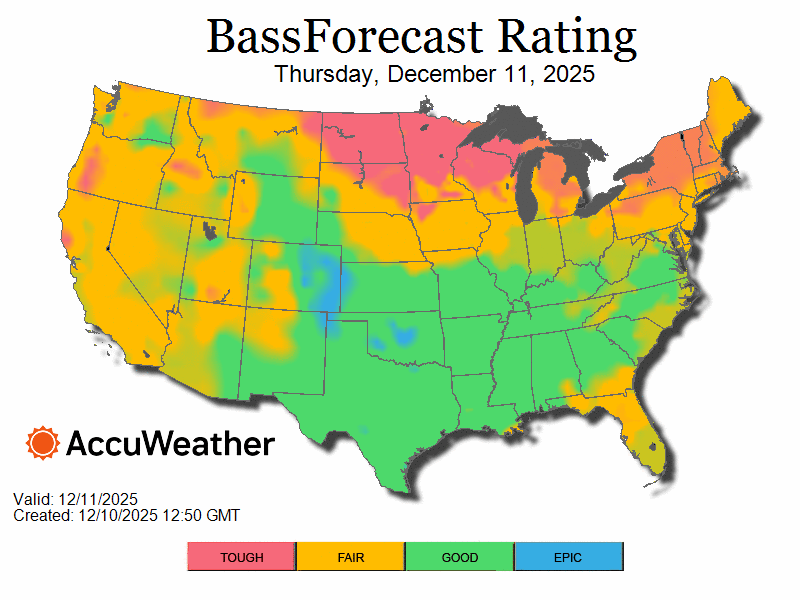
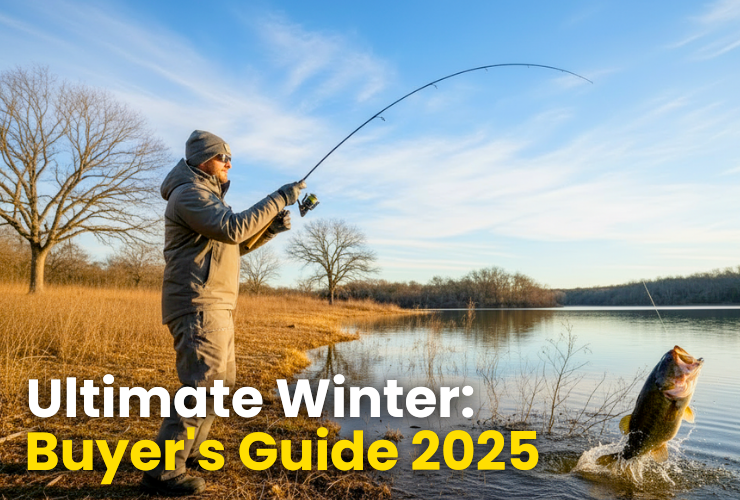
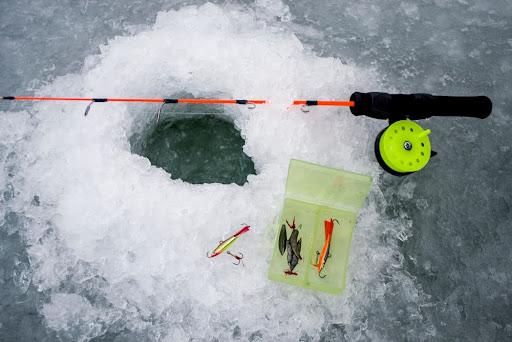
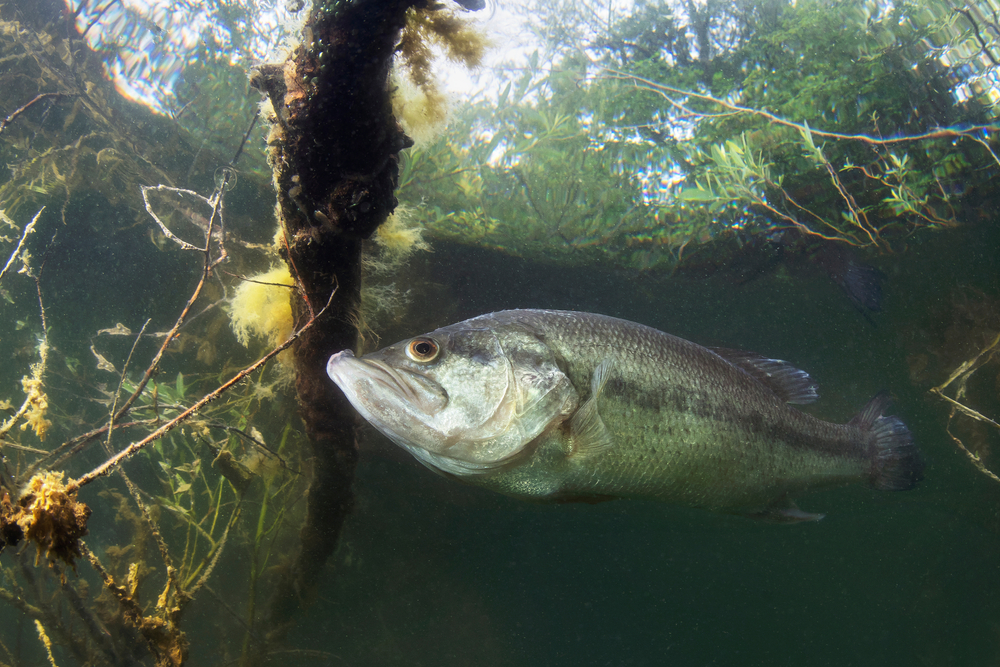
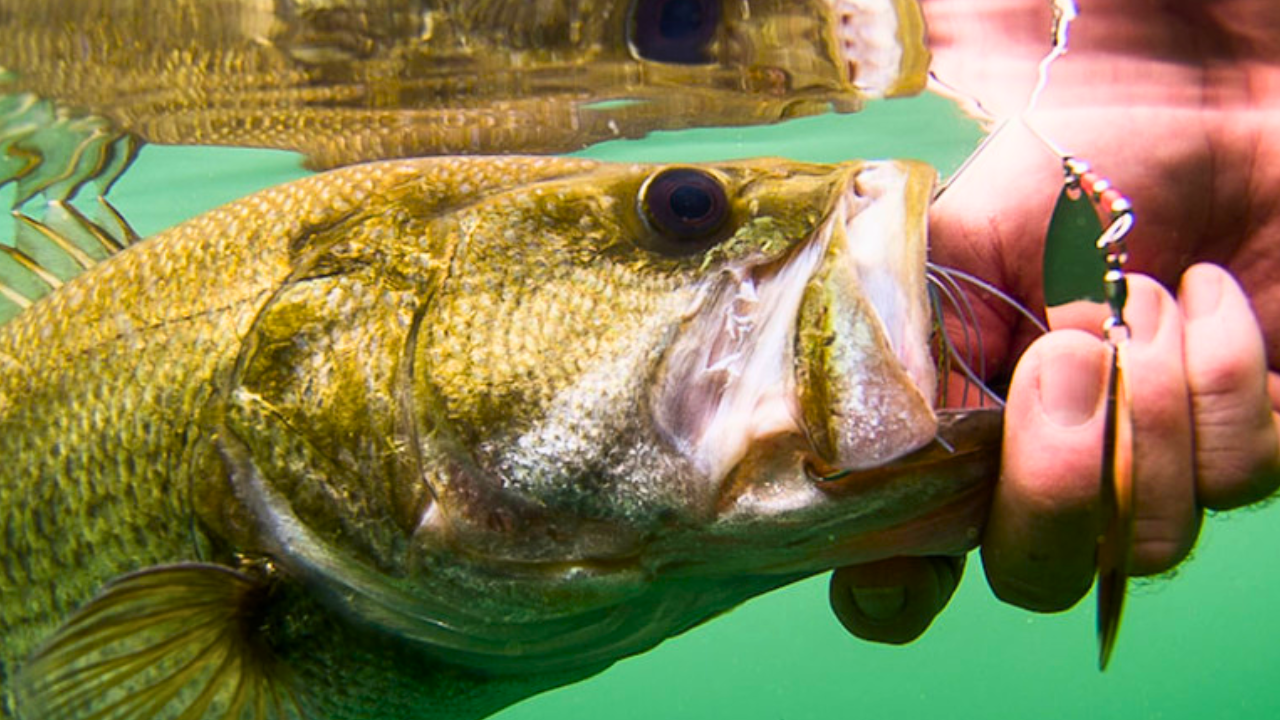
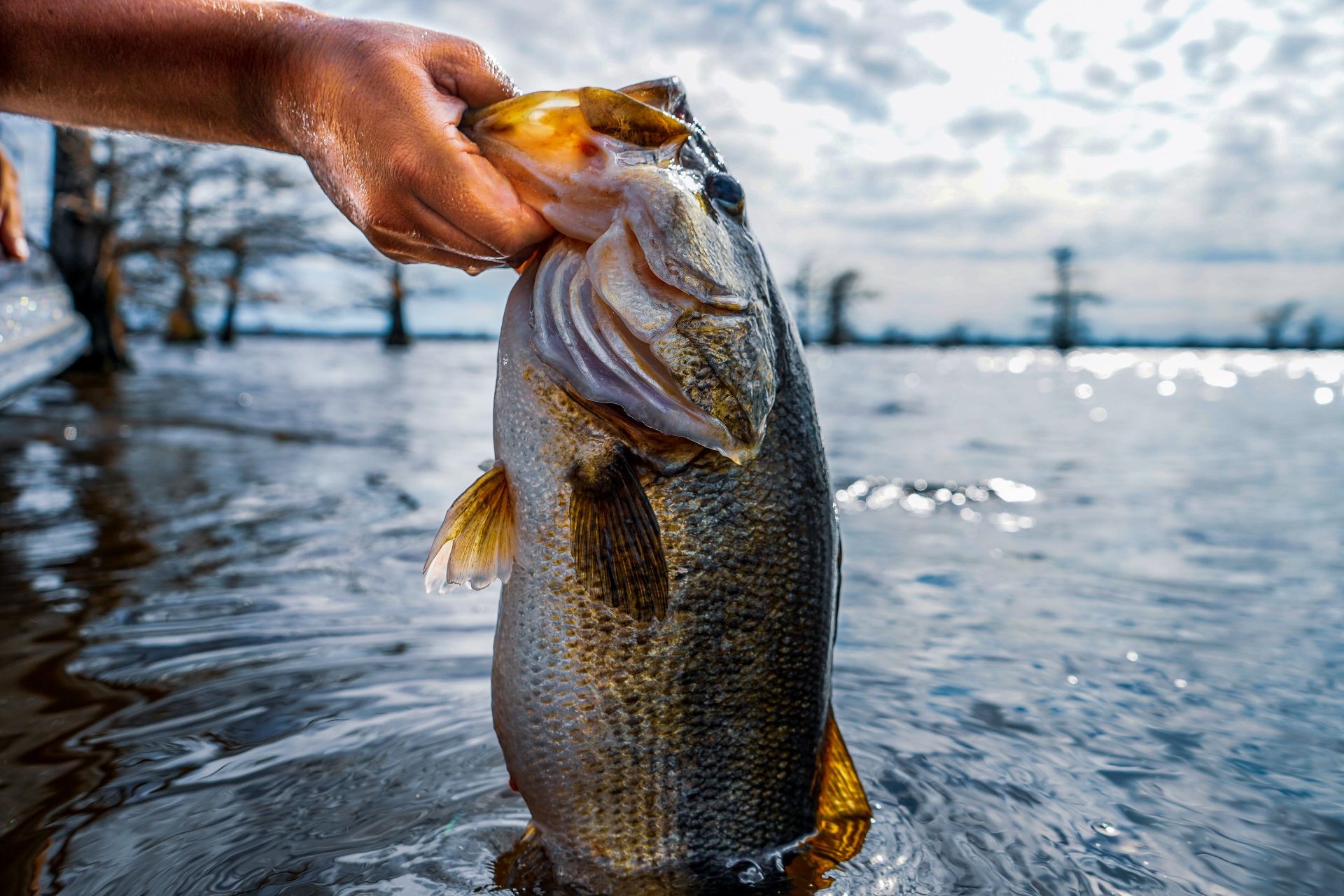
.png)
.png)